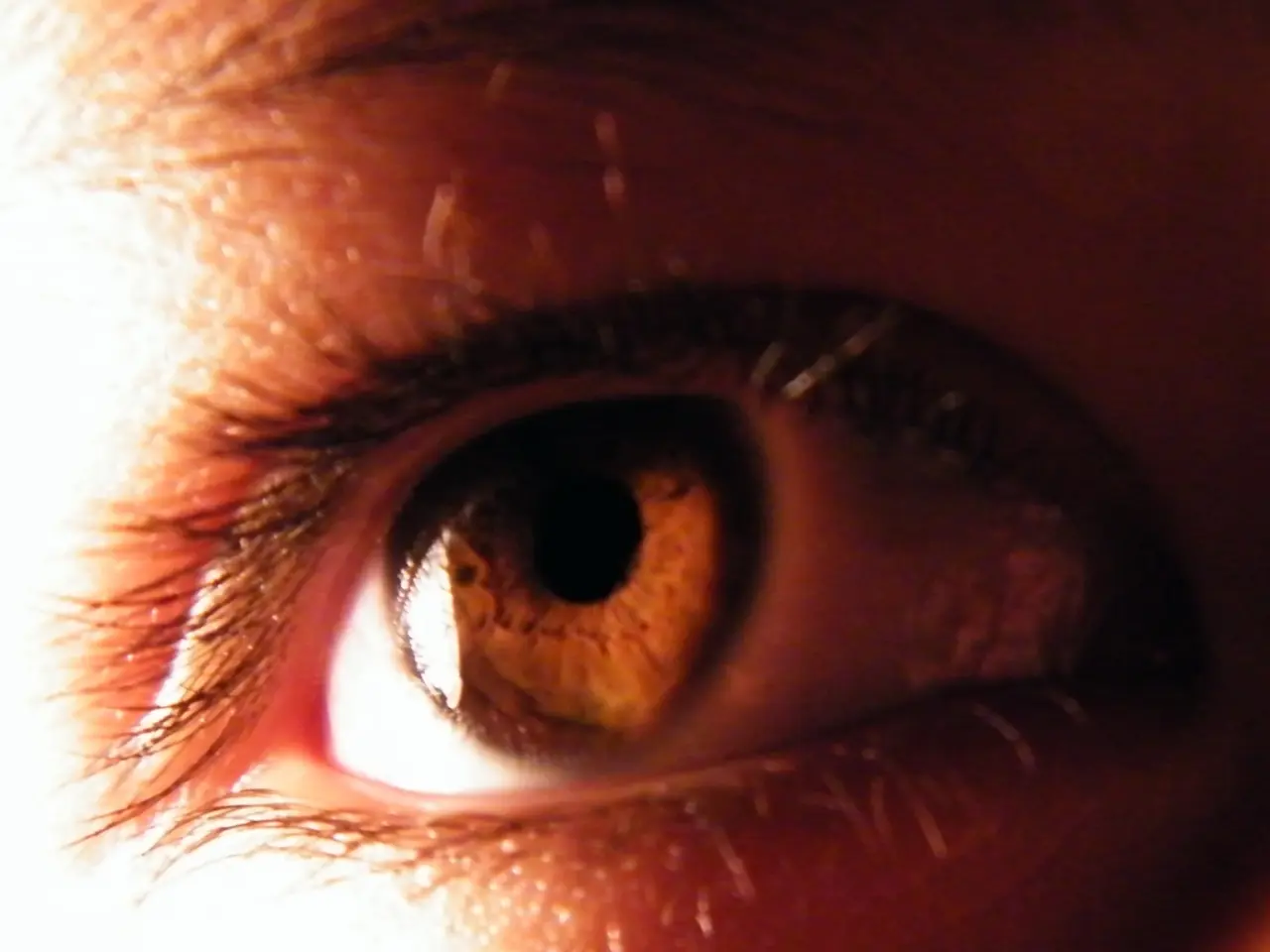Eye-region Psoriasis: Signs, Causes, and Remedies
In the realm of skin conditions, psoriasis stands out as a common inflammatory disorder that can affect various parts of the body, including the sensitive skin around the eyes. This article focuses on the unique treatment approaches for eyelid psoriasis, which differ significantly from other types due to the vulnerability of the skin in this area.
Eyelid psoriasis treatment prioritises safe topical options and supportive care to minimise eye complications. Nonsteroid topical treatments are often preferred, with calcipotriene, a vitamin D analog, being a common choice. Additional supportive care may include warm compresses, eyelid massages and scrubs, eyelid cleansers, lubricant eye drops, and sometimes antibiotic ointments if a secondary infection is suspected.
The use of steroids around the eyes is generally limited and applied with caution due to potential side effects such as skin thinning, glaucoma, or cataracts. If topical steroids are used, they must be applied under close medical supervision following strict guidelines.
In contrast, broader psoriasis treatment can involve more aggressive topical steroids, phototherapy, and systemic therapies. Phototherapy, however, is not recommended for eyelids due to the risk of eye damage.
Key differences between eyelid psoriasis treatment and other types include the limited use of steroids, the preference for vitamin D analogs as topical choices, the avoidance of phototherapy, and the emphasis on supportive care. Regular consultations with dermatologists and ophthalmologists are essential for eyelid psoriasis due to the sensitivity and risk of vision-threatening side effects.
Symptoms of eyelid psoriasis can include skin discoloration, scaling, and crusting around the eyelid, the rims of the eyes turning upward or downward, irritation, eyelashes that rub on the eyes, scales that resemble dandruff flaking off and sticking to the eyelashes, and pain when moving the eye. Triggers for psoriasis can include infections, stress, certain medications, sunburn, skin damage, and environmental factors.
Eczema and psoriasis can be challenging to differentiate on the eyelids, and anyone with a rash on the eyelid or around the eyes should seek a doctor for a correct diagnosis. Around one in three people with psoriasis develop psoriatic arthritis.
Biologic therapy, which targets specific components of the immune system, can help reduce the number of flares and severity of symptoms. Systemic medications, such as oral retinoids, methotrexate, and cyclosporine, may also be used. However, these treatments are usually reserved for moderate to severe cases and not specifically for isolated eyelid involvement.
It's important to note that eyebrow piercings may increase the risk of experiencing a flare near the eye. A person may need regular appointments with an ophthalmologist to assess for glaucoma or cataracts when using topical therapy for eyelid psoriasis.
In conclusion, managing eyelid psoriasis requires a careful and considered approach, focusing on safe topical options and supportive care to avoid eye complications. Always consult with healthcare professionals for accurate diagnosis and treatment.
- Due to the vulnerability of the skin around the eyes, the treatment for eyelid psoriasis prioritizes safe topical options and supportive care to minimize eye complications.
- Calcipotriene, a vitamin D analog, is a common choice for nonsteroid topical treatments in the management of eyelid psoriasis.
- In contrast to eyelid psoriasis treatment, broader psoriasis treatment can involve more aggressive topical steroids, phototherapy, and systemic therapies, but phototherapy is not recommended for eyelids due to the risk of eye damage.
- It's essential for eyelid psoriasis patients to have regular consultations with dermatologists and ophthalmologists due to the sensitivity and risk of vision-threatening side effects.
- A person may need regular appointments with an ophthalmologist when using topical therapy for eyelid psoriasis to assess for potential side effects such as glaucoma or cataracts.




